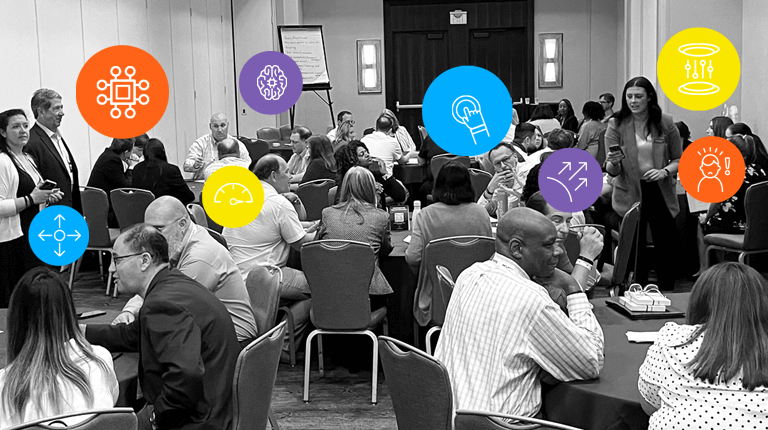Advancing consumer technology and the pandemic has made digital transformation a top priority for business leaders across all industries. What once was a nice-to-have has quickly escalated to a must-have for businesses wanting to compete in the modern age. And it’s no longer just about having digital channels, like websites and apps, but having an integrated system of digital accessibility so that customers can quickly and efficiently get done what they need.
According to PwC’s 2020 Global Digital IQ survey, 66% of companies said revenue growth and profitability would suffer if they didn’t digitally transform quickly enough. And it’s not just the timeliness that companies should be concerned about, but also the effectiveness of their digital initiatives. Successful digital transformation requires buy-in from across the entire company, as a siloed approach will quickly fail due to a lack of cohesion, resulting in a disjointed customer journey. As your brand plans for a more customer-focused digital presence, focusing on channel strategy can elevate the entire project.
What is a channel?
A channel is the mode of communication with which a brand and their customer can communicate. Phone (voice), text, webchat, smart speakers, and email are all examples of channels. For large enterprises, channels are typically supported with a technology, such as an Intelligent Virtual Assistant (IVA). Not all technologies are created equal, however, and a channel can be a major pain point in the customer journey if the technology is not advanced enough or is not properly integrated into backend systems. You can learn more about channels and which supporting technologies are best for your business in our whitepaper.
Beyond channels and technology, there are a few considerations to bring to digital transformation planning to ensure success. These three points all center around the idea of channel optimization, or opti-channel. As consumers become more empowered, they want to use different channels depending on their preferences, type of the query at hand, as well as the context of the situation. This is called the opti-channel approach – leading with the channel that is the most optimal to the customer at that point in time.
In an opti-channel strategy, thinking upstream, understanding synchronicity, and prioritizing quality will all help yield the greatest results. Read on to see how each can support your strategy.
Think upstream
A successful digital transformation initiative requires upstream thinking. This means anticipating a customer’s needs before they become a problem. A cohesive integration of digital resources into your business’s ecosystem is vital to establish this. How does this relate to channels? In order to optimize channels, brands must take into account the task at hand as well as the customer’s preferences. Data is vital to evaluate both of these areas. A task such as resetting a password may not require the same channel or assistance that disputing a payment may need. If a brand is able to capitalize on which channel these issues are most effectively solved on, they can put resources in place to help keep customers on the path of least resistance.
Synchronicity
When it comes to timing and channel strategy, most brands pay attention to the wait time. Obviously decreasing wait times is important for customer’s expectations, but what about the synchronicity of channel communication? Knowing the difference between synchronous and asynchronous channels can be a game changer for creating customer journeys that ultimately lead to customer satisfaction.
- A synchronous channel is where the customer and the brand communicate in real-time. Think of a phone conversation or a live chat conversation. Questions are answered in real-time whether by a human agent or a virtual agent.
- An asynchronous channel is where the conversation is more open-ended and is typically resumed later by a customer. Think of emails, where the customer asks questions and receives a reply after some time.
Synchronous channels are more popular, especially in the realm of digital transformation where faster answers equals a better experience. But, if an issue is going to take a brand a while to solve, consider having asynchronous channels in place to support the customer from wasting their time on hold.
Quality over Quantity
A big theme in the past decade has been multi-channel and omnichannel strategies. While these both are an improvement from single channels, they also fail to properly address the quality of customer care being offered. Opti-channel reverses this approach by prioritizing on the quality of the channel and its supporting technology. It’s not about how many channels you have, but how well they actually support your customers. Think of it like this: if your customer base is not savvy with texting, then it doesn’t make sense to invest in text channels, but rather you should invest in technology to support voice channels.
Using an opti-channel approach in your digital transformation strategy not only streamlines the customer journey, but also ensures that the investments that your brand makes are going to have a positive impact on the customer experience and your bottom line. To see more about opti-channel and considerations for digital strategy, check out our whitepaper.





